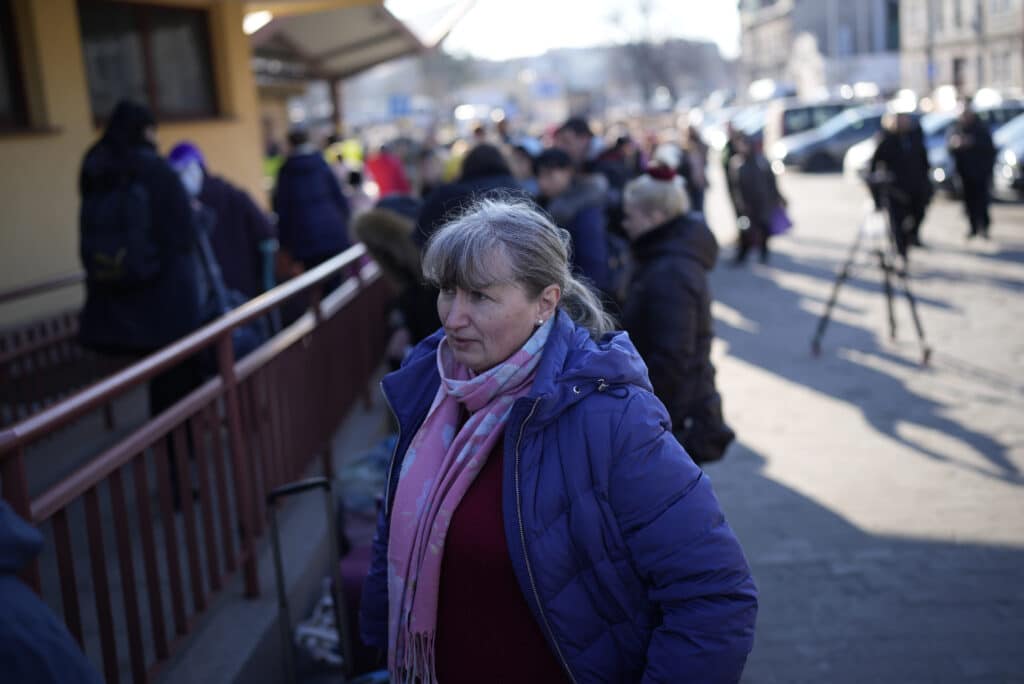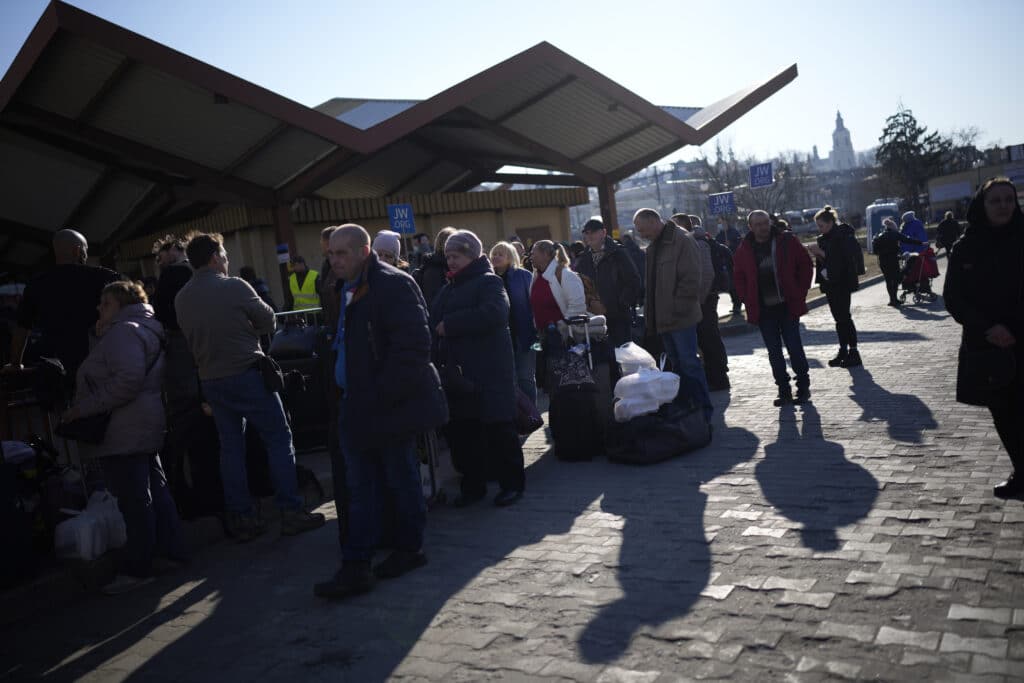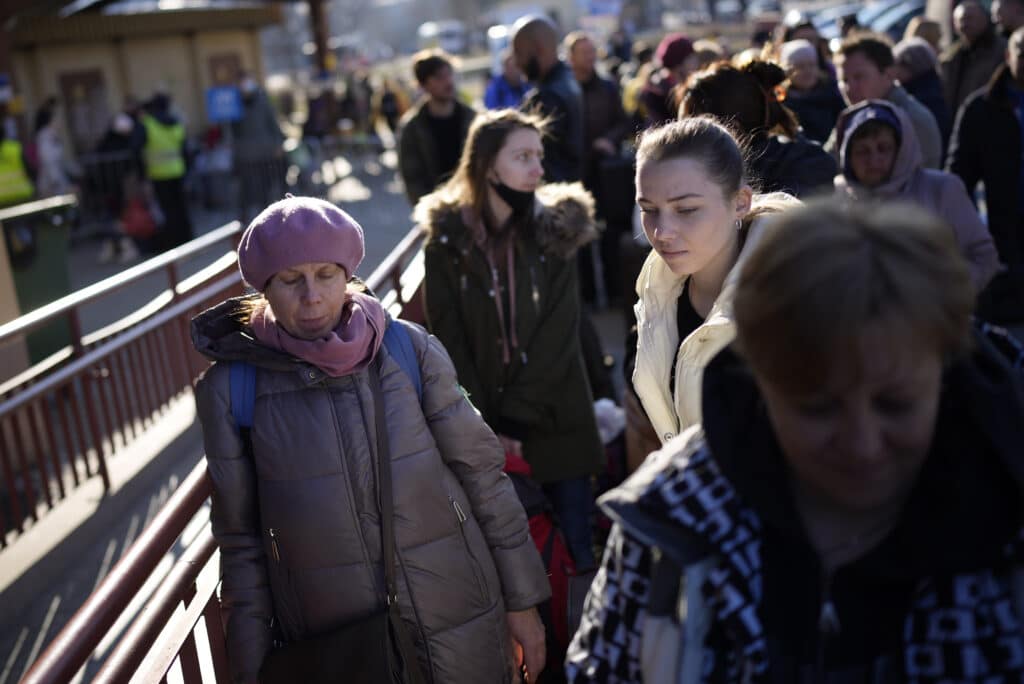One comparison that keeps getting made in the Russia-Ukraine war is to World War II and the refugees that conflict spread all over Europe and neighboring regions, and now another comparison can be made, to “Rosie The Riveter,” the symbol of American women of the 1940s who became the backbone of American manufacturing. Those women rolled up their sleeves and went to work in factories and military installations, to take the place of men who had gone off to war, only now these Ukrainian women are heading into an active and extremely dangerous war zone to offer any help they can, it is heartwarming and heaped with sorrow at the same time. As reported by the AP:
Many are not refugees themselves but women who had been living and working abroad, and now felt the call to return home and help
PRZEMYSL, Poland (AP) — While tens of thousands of people have fled Ukraine every day since Russia’s invasion, a small but growing number are heading in the other direction. At first, they were foreign volunteers, Ukrainian expatriate men heading to fight and people delivering aid. But increasingly, women are also heading back.

Motivated by a desire to help loved ones in trouble, or just to contribute to the defense and survival of their country and compatriots in ways large and small, such women are braving the bombs that have increasingly pounded Ukraine since Russian forces invaded on Feb. 24.
Many are not refugees themselves but women who had been living and working abroad. Others had already chosen to stay put in their country but were forced to cross the border to shop for needed goods as supplies dry up under the onslaught at home.
“I will go back and help. I am a health worker, so the hospitals need help,” said Iryna Orel, 50, tugging her luggage before boarding a train from Przemysl, Poland, to Lviv in western Ukraine. “And I will stay until the end.”
Poland has taken in more than 1.8 million refugees, or over 60% of the total exodus of 3 million people since the invasion. In the same period, Polish border guards have estimated that at least 186,000 people have journeyed into Ukraine, more than four in five of them Ukrainians.

Reports have been numerous about the aid deliveries, reported weapons flows and travels of fighters into Ukraine. Less-noticed has been the entry or cross-border shuttling of women who are either trying to help from abroad or stay in the country to continue their lives as best possible.
“I am returning to Ukraine to help people evacuate too,” said Maria Khalica, who lives in Italy but was planning to travel to the Ukrainian capital, Kyiv. “I am in a more stable state now than my friends, who are under rocket attacks and bombs.”
“I know that Kyiv is also going to be occupied and we are taking the last chance to help other people” there, Khalica added, predicting that Russian forces will eventually take over the capital.
With Ukraine’s government ordering men to stay and fight, the vast majority of people fleeing Ukraine have been women, children, and the elderly, according to national officials and the U.N. refugee agency.
Anna Michalska, a spokeswoman for the Polish border guards, said its tally includes people who come and return — like those who do shopping in Poland and go back, or who bring relatives across and return. So, some people are counted a number of times.

Some want to return to join their families, others to help in any way they can, either as health workers or with the army.
“We plan to return to the family, and we will decide with the family what to do next” said Olga Simanova, 56, who traveled from Germany to return to the city of Vinnycja.
Keaten reported from Geneva. Monika Scislowska contributed from Warsaw, Poland.
By RAFAL NIEDZIELSKI and JAMEY KEATEN






